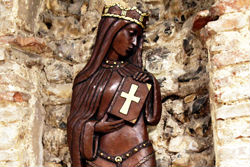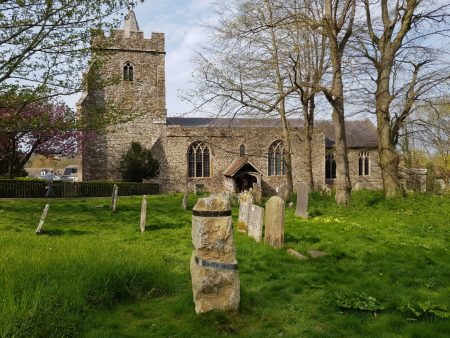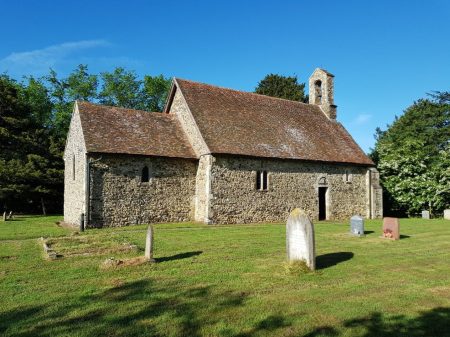THE ROYAL KENTISH CAMINO
One for keen walkers, historians and church enthusiasts! And feminists too – the Royal Kentish Camino celebrates the achievements of three powerful women from successive generations of the Kentish Royal Family in the 6th and 7th Centuries AD.
This period laid the foundations for the creation of England as a nation state, ultimately leading to the formation of today’s United Kingdom. The route offers a unique experience of pilgrimage in this country as it ends at the shrine of a saint whose relics are still preserved and venerated in the church she founded almost 1,400 years ago.
The Royal Kentish Camino was launched in April 2024 – ‘Camino’ comes from the Spanish, meaning “path,” “trail,” or, more generally “way.”
23 MILES OF HISTORY
The route takes you from Canterbury through the Elham Valley towards Lyminge and then Folkestone, passing through some of the most beautiful countryside in the Folkestone and Hythe area, with stunning views along the way.
It doesn’t have to be completed in one day of course, and there are many ancient hostelries and newer places to eat, drink and stay the night.


ST MARTIN, CANTERBURY
St Martin in Canterbury is part of the World Heritage Site that also contains Canterbury Cathedral and St Augustine’s Abbey. It is the oldest church in the English-speaking world, used before the end of the 6th Century by Queen Bertha, who is thought to have encouraged her husband King Aethelberht to invite the Pope to send the Christian mission that led to the conversion of England.
ST MARY AND ST ETHELBURGA, LYMINGE
Lyminge in the rural Elham Valley is where Bertha’s daughter Ethelburga founded a church in the 630s, that was re-excavated and studied in detail in 2019. Ethelburga was Queen of Northumbria and began the conversion of the north of England to Christianity in 625.
Lyminge is also home to the Coach and Horses pub, possibly standing on this site since the 1600s, although the current building dates to 1888, and still going strong today.


ST OSWALD, PADDLESWORTH
From Lyminge, the route climbs up onto the ridge of the North Downs and passes the ancient church at Paddlesworth. This is dedicated to St Oswald, one of the first English saints, and may have been founded by Ethelburga’s daughter Eanflaed who married Oswald’s brother King Oswiu of Northumbria.
Paddlesworth was also a sighting-point for the Anglo-French Survey (1784-1790) which first measured the exact location of the Royal Greenwich Observatory relative to the Paris Observatory, the first precise survey in Britain and forerunner to the work of the Ordnance Survey.
ST EANSWYTHE, FOLKESTONE
Having reached the coast above Folkestone, stop to savour the view across the Channel, then down the cliff to the harbour and up the opposite cliff where Bertha’s granddaughter Eanswythe founded the first church in Folkestone around 660 and where her bones have been preserved ever since. Nowhere else in the British Isles is there a church preserving the relics of its founding saint, so St Eanswythe’s shrine is in this sense unique.

PRACTICALITIES
A route map can be found at www.ldwa.org.uk or www.lymingeparishcouncil.org.uk
To find accommodation along the route, visit Places to Stay
Folkestone is easily accessible by rail, road or coach from across the country.